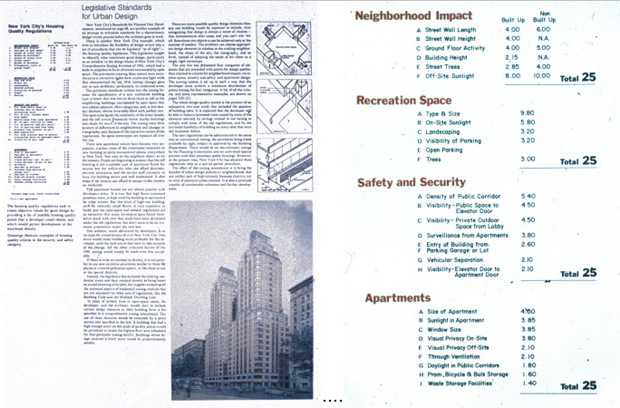
Housing Quality Zoning was directed by Michael Kwartler for the NYC Urban Design Council in 1975 and sets out an alternative to the conventional zoning legislated in the 1961 Resolution. Since 1961, residential development had been heavily influenced by New York’s zoning ordinance, which prescribed the tower-in-the-park form of development. However, as a result of the work of the Urban Design Council, it was revealed that the one-size-fits-all prescribed the requirements of the 1961 Zoning Resolution actually detracted from the human state and character of the City’s traditional neighborhoods.
Briefly, Housing Quality Zoning is a set of 26 guidelines or program elements divided into four categories. The categories are Neighborhood Impact, Security and Safety, Recreation Space and Building Interior. Each program element contains a goal and a set of performance standards determining the degree of compliance with that goal. Partial compliance, measured as a percentage, receives a point score somewhat less than the maximum. The system is based on permitting maximum flexibility and insuring a high level of minimum quality. This framework is a system of which quickly and objectively establishes the degree of compliance a building has with clearly stated planning and design objectives. It permits the architect or developer to choose which components of quality to emphasize over others as dictated by unique conditions such as marketing, neighborhoods or sites.
Housing Quality Zoning was adopted in 1976 by the New York City Planning Commission and was the city’s first performance-based regulations. It is featured in An Introduction to Urban Design (Barnett), received a Progressive Architecture Design Award in 1974, and has become the model for contextual zoning in NYC.